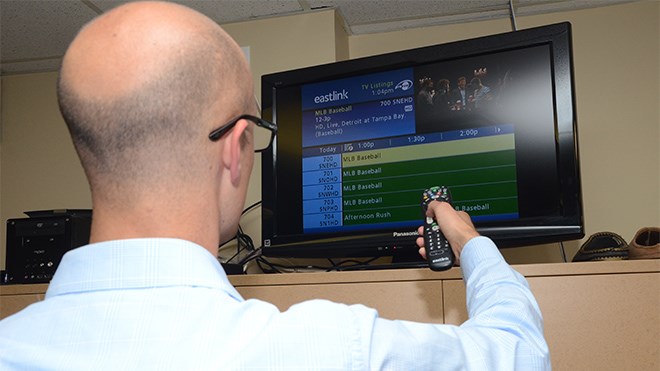Just over four years ago Devin Arthur ditched his cable subscription and switched his family to the popular streaming television service Netflix.
“Every time we turned the TV on to try and find something we noticed most of our time was spent just browsing and not watching anything,” said Arthur. “We could never find anything we liked.”
More recently, Arthur got a Nexus Player – a device made by Google that connects to his home wireless network and allows him to stream video services like Netflix and YouTube to his television.
The Nexus Player also lets Arthur access Google's Play Store, where he can rent or purchase newer movies, and download full seasons of his favourite shows.
Arthur is part of a growing group of Canadians – often referred to as cord cutters – who have ditched traditional cable and satellite services and use the Internet, or even old-fashioned antennas, to watch the content they want.
Kyle Gray hasn't cut his cable subscription with Eastlink yet, but said he plans to make the change soon.
“It's almost like a life-changing event, trying to get rid of cable, because it's something you grew up with all the time,” he said.
He and his family mostly watch Netflix already, and the only thing that kept him tied to his cable subscription was live sports.
But he said he'll subscribe to Rogers' NHL GameCenter service to stream hockey games through the Internet.
In a recent report, the firm IDC Canada said it estimates nearly 500,000 Canadians will cut the cord between late 2014 and the end of 2019.
“It's not a mass exodus of TV subscribers right now, but it is picking up momentum,” said Emily Taylor, a senior analyst with the firm.
There are more than 13.3 million households in Canada, and in late 2014, 11.8 million households subscribed to a cable or satellite television package.
The number of traditional TV subscribers in Canada should be closer to 11.3 million by late 2019, Taylor said.
“Canadian consumers are starting to find content and watch video in new ways,” she said.
Devices like Arthur's Nexus Player, the Roku streaming media player, and Apple TV have made it easier for people to watch online content on their televisions.
Taylor said she expects more services similar to Netflix to make their way to Canada in the coming years.
Bell launched its CraveTV streaming service in late 2014, and Rogers and Shaw have teamed up to launch Shomi.
But both services are meant to be complimentary to people's cable and satellite packages, said Taylor.
To use CraveTV, consumers need to be television customers with Bell or a number of partner companies, including Eastlink.
Millennials – people born between the 1980s and early 2000s – are more likely to be cord cutters, said Taylor.
Along with the younger generation, millennials are also watching more user-generated content created by their peers on websites like YouTube, and the popular video game streaming service Twitch.tv.
“It's a different type of video, but it's still video and eyeballs are shifting from some of the more traditional programing to that sort of programing,” she said.
Brian McCullagh, director of business development with Sudbury-based Internet, TV and home phone provider Vianet, said streaming websites like Netflix represent a growing proportion of Internet traffic.
“Netflix is growing, YouTube has always been popular,” McCullagh said.
McCullagh said he sees Vianet's role as providing the “best pipe” they can to the consumer, to allow them to use bandwidth-heavy streaming video services without hitting download caps.
But while Internet video has become more popular, McCullagh said his customers are still subscribing to Vianet's television service as well.
“Since we're growing our service through a fibre-to-the-home triple-play, we don't see people cutting the cord at that point,” he said.
The triple-play refers to a package that includes an Internet, home phone and television subscription through the company's fibre-optic network.
Join Sudbury.com+
- Messages
- Post a Listing
- Your Listings
- Your Profile
- Your Subscriptions
- Your Likes
- Your Business
- Support Local News
- Payment History
Sudbury.com+ members
Already a +member?
Not a +member?
Sign up for a Sudbury.com+ account for instant access to upcoming contests, local offers, auctions and so much more.
